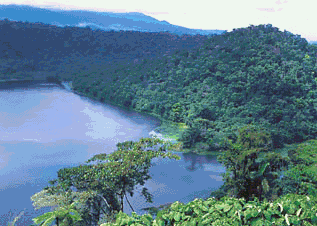
Costa Rica is part of the Central American isthmus and borders Nicaragua to the North, Panama to the South, the Atlantic Ocean to the East, and the Pacific Ocean to the West .
Capital:
San José.
Area:
51,100 square kilometers (approximately 32,311.3 square miles)
Population:
4.560.000 people
Population Density:
89.24 per km2
Official language:
Spanish
Human Development Indicators(2009):
Human Development Index: 0.854 (IDB)
Life expectancy at birth (2008): 79,3 years* (INEC)
Child mortality rate: 8,8 (of every 1000 births)* (INEC)
Population without education: 3,73% (INEC)
Poverty: 18,5%* (MIDEPLAN)
Extreme poverty: 4,2%* (MIDEPLAN)
Protected Areas: 25,1% of of the territory is protected
According to the Human Development Index of United Nations 2009, Costa Rica is on place 54, within the group of countries with high human development.
* Source: National Statistics and Census Institute, Planning Ministery of Costa Rica and Interamerican Development Bank
Economy:
Costa Rica’s economy is highly stable. Foreign investors maintain an interest in the country due to its political stability and its high indices of education.
Private and state-owned banking is efficient and accessible throughout the country.
The official currency is the colon.
Economic Indicators (2009):
Unemployment rate: 7,8%* (MIDEPLAN)
Inflation (2008) : 7,8%* (MIDEPLAN)
GDP Growth: 1,3%* (MIDEPLAN)
GDP: US$ 29,060.3 million (IDB)
GDP per capita: US$ 6,498.4 (MIDEPLAN)
Amount of exportations: US$ 12,466.7 million (IDB)
Amount of importations: US$ 12,431.7 million (MIDEPLAN)
Source: Planning Ministery of Costa Rica and Interamerican Development Bank
Exports:
During the last years, with the purpose of reducing dependence on traditional products (coffee and bananas), which lowered their prices in the international markets, the country has fostered the exportation of non-traditional goods.
Currently, the exportation of electronic components occupy first place, followed by that of bananas or plantains, medical equipment, pineapple, coffee, cotton, and ferns and foliage, among others. In addition, tourism is one of the major sources of revenue for the country.
Source: http://www.comex.go.cr
About Costa Rica:
Costa Rican culture has been characterized for its strong tradition of peace, democracy and respect of human rights. Additionally, Costa Ricans take pride in being citizens of a country that abolished its army since 1948.
Geography:
Costa Rica has a variety of terrains, including valleys and plains. Cerro Chirripó is the highest mountain, with a height of 3820 meters. The country also has a great number of volcanoes, some of which are currently active.
Costa Rica has coasts on the Caribbean Sea and the Pacific Ocean.
Climate:
The climate in Costa Rica is tropical and subtropical. There are only two seasons: the dry season, which lasts from December to April and the rainy season from May to November.
Government:
Costa Rica is a democratic Republic that respects individual rights of the citizens. Its government is divided into three powers: the Executive the Legislative, composed by 57 congressmen and the Judicial. There is a fourth power, which is the electoral, that reflects how important is to vote for Costa Rican people.
Health and Education:
Investments in health and education have been a priority for Costa Rica. It is for this reason that important resources have been destined to these two areas. The result has been an educated and healthy population, whose indices of literacy and life expectancy are similar to those of a developed nation. The medical system in Costa Rica has had a social character, allowing all citizens to have access to it for more than half a century. Additionally, it should be noted that elementary education is free and mandatory.


